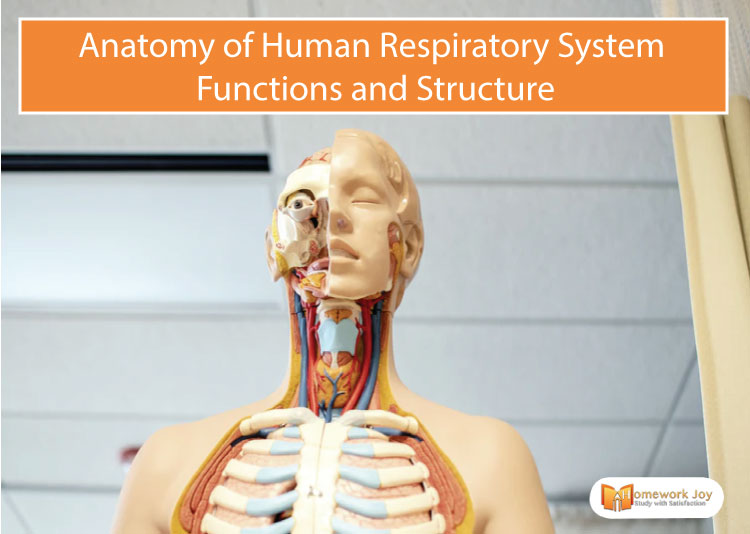Do you know? A healthy person breathes an average of 13 pints of air every minute. Indeed breathing is the most important thing that our body does. Without lungs, we can’t live. We cannot live without our entire respiratory system. Thus today, we’ll discuss how the human respiratory system works. So if you need any help to complete your assignment, then you must go through it.
Before starting today’s lesson, let’s see some of our new posts:
What is Chemical Bonding | Types of Chemical Bonding
COVID 19: How to Overcome the Fear of Examination
So today we’ll be discussing the following points about the human respiratory system:
- What is the Human Respiratory System?
- How Our Respiratory System Help Us in Breathing?
- Some Interesting Facts About Human Respiratory System
Now let’s see what we call in the human body like the respiratory system.
What is the Human Respiratory System?
The human respiratory system is consists of organs and other body parts of your body. This whole system aims to assist breathing in the exchange of oxygen and carbon dioxide. This system includes all the body parts that help us in breathing—for example, bronchi, lungs, nose, pharynx, larynx, and so on.
Our respiratory system does two things that are vital to life. First, it brings oxygen in or body, which is taken by our heart to assist our cells in working correctly. Second, it helps us to get rid of carbon dioxide, which is a waste produced by our cells. Thus all the organ bronchi, lungs, nose, pharynx work together as a team and compose the human respiratory system.
Furthermore, these organs work as funnels through which air float down to our lungs. Also, there are small sacs of air known as alveoli. So the ultimate goal of the system is to bring down the oxygen into the bloodstream and push away carbon dioxide from the blood into the air. Thus when we catch some infections like coronavirus, it becomes harder for us to get oxygen and get rid of carbon dioxide.
How Structure of Our Respiratory System Help Us in Breathing?
As we breathe in, the air enters our body through the mouth or nose. Then this air passes through the sinuses, which are hollow spaces in the skull. Also, these sinuses help in regulating the temperature and humidity of the air we intake. From sinus, the air then passes through larynx or voice box, and then to the trachea or windpipe. After passing these organs, oxygen then enters into bronchial tubes. Thus these two bronchial tubes carry air into each lung. This whole part of the human respiratory system, before the air meets the lungs, is also known as the upper airway.
Structure of Lungs
Lungs are the coned shaped structure that takes up the most of our body in the chest. As these lungs take oxygen in our body, which helps our cells to live, these are essential for us. Besides this, they help us in getting rid of carbon dioxide.
Moreover, we have two lungs left and a right lung. These lungs are divided into ‘lobes.’ The lobes are big sections of tissues divided by ‘fissures.’ So the bronchial tubes split up to carry oxygen into lobes of each lung. “While the right lung has three lobes, the left lung has only two lobes,” according to American Lung Association. Do you know why the left lung has only two lobes? It is because the heart takes some space on the left side of our chest.
Further, the lungs divide into smaller portions known as bronchopulmonary segments. To be more specific, these are pyramidal-shaped organs separated by thin membranes. Also, there are around 10 of them in each lung. So through these, each lung receives its own blood and air supply.
Blood Supply into the Lungs
The lungs are like cardiovascular organs as they receive a large amount of blood supply. The pulmonary arteries which supply blood to the lungs come directly from the right side of our heart. Thus lungs receive large blood supply.
Further, these arteries carry blood, which contains a low amount of oxygen and a high amount of carbon dioxide to our lungs. Thus it aims to blow off carbon dioxide and help the lungs in absorbing more oxygen into the bloodstream. After this process, the newly oxygenated blood travels back through pulmonary veins connected to our heart. As a result, the heart pumps it all around our body to supply oxygen.
Some Interesting Facts About Human Respiratory System
The human respiratory system consists of different organs that we talked about. So now let’s move forward to know interesting facts about the respiratory system:
- When you exhale carbon dioxide, you also breathe out around 0.59 ounces of water.
- An average healthy person can hold his or her breath between 30-60 seconds. But free divers who practice underwater diving can hold their breath for more than 20 minutes. For instance, Stig Severinsen from Denmark made a Guinness World Record by holding his breath for 22 minutes underwater.
- Since our lungs contain 300 balloon-like structures called alveoli, lungs are the only organs that can float on water.
- Ancient Egyptians understood the importance of lungs and windpipe. That is why they created hieroglyphs to symbolize the unity of upper and lower Egyptians. This symbol helped their country to be strong and healthy.
- Modern science shows that asthma is a chronic lung disease. Before that, it was treated as a psychological disease.
So it was the whole anatomy of the human respiratory system which each of us should know. If you haven’t understood it well or need more information to complete the homework, you should take an expert’s help. For any biology assignment help, you can rely on us. We offer top-notch experts for different subjects so that you can get professionals guidance for the homework.
